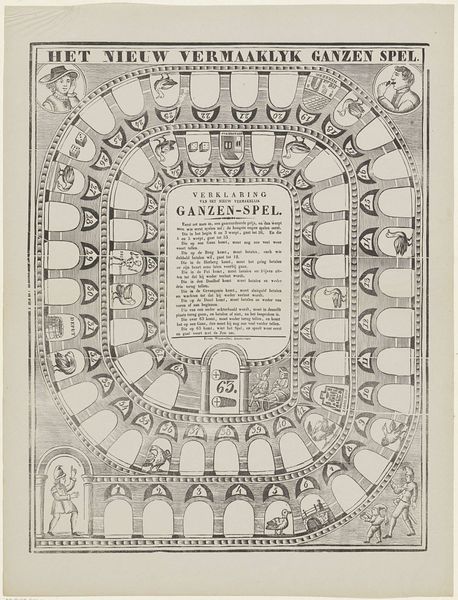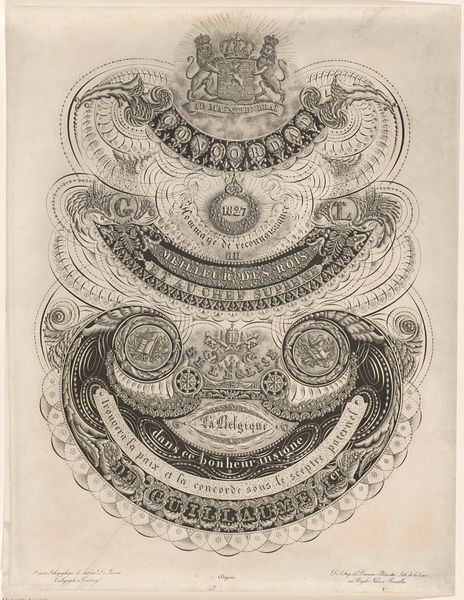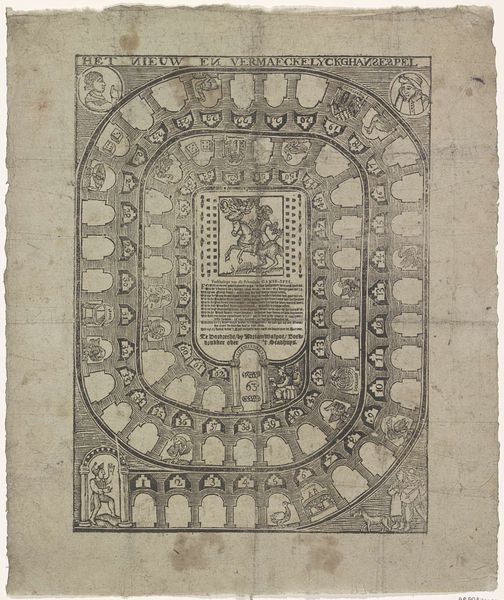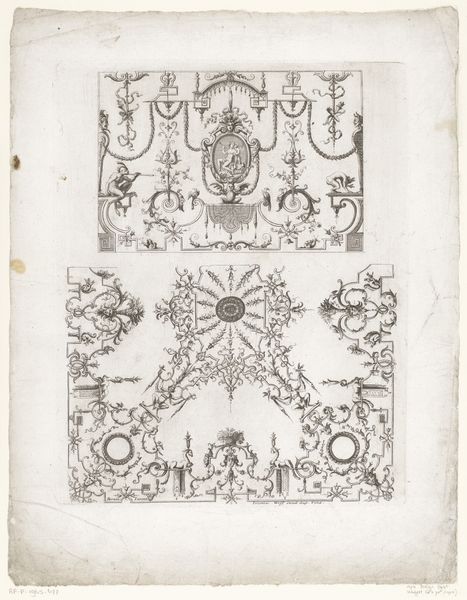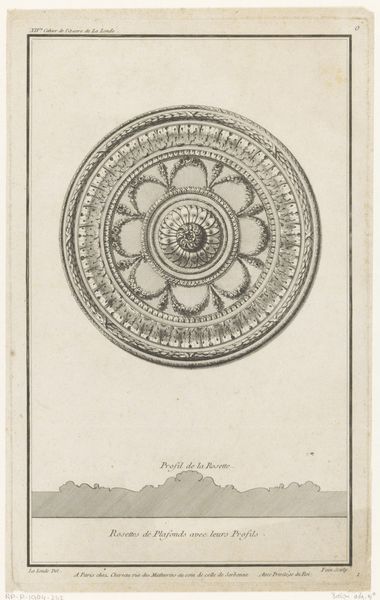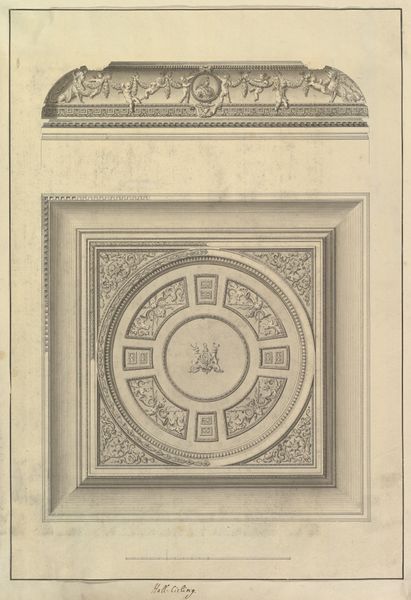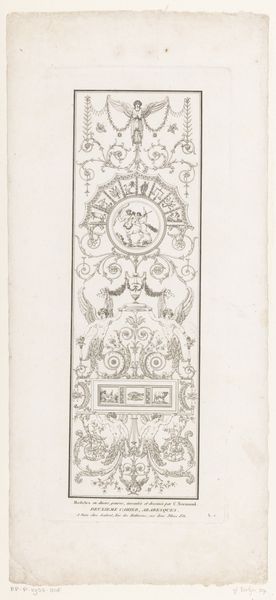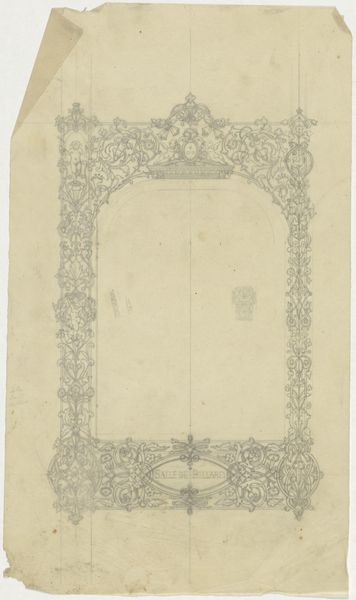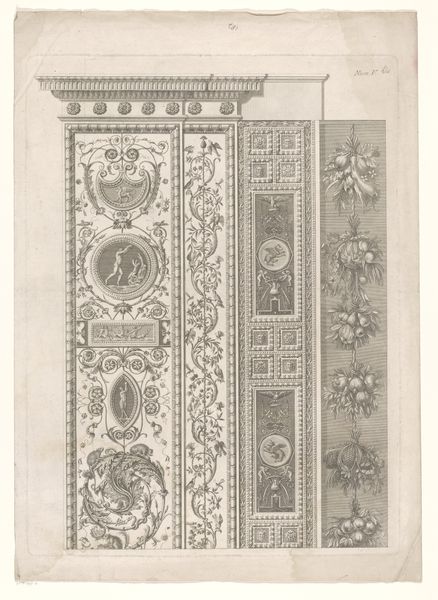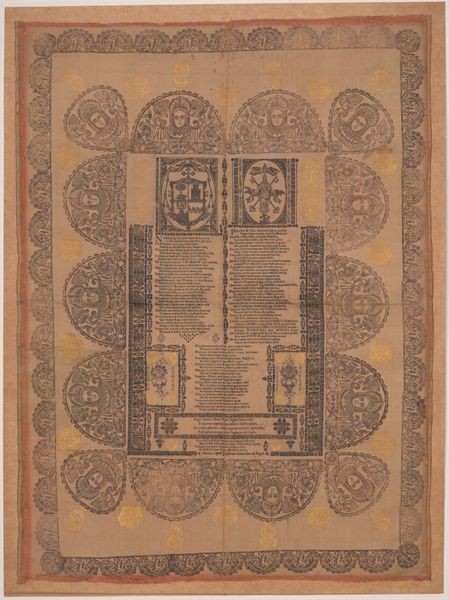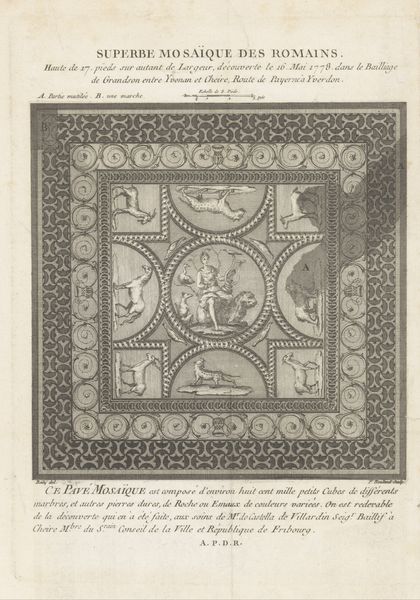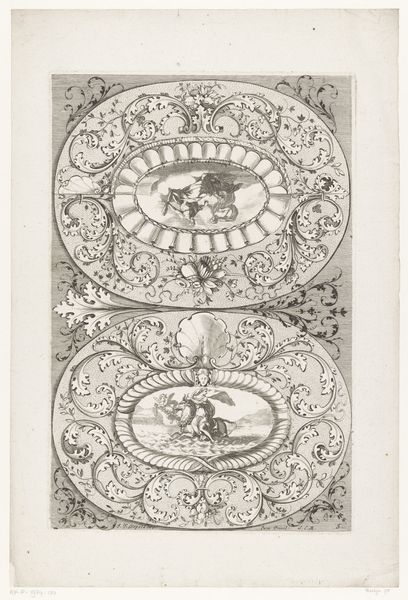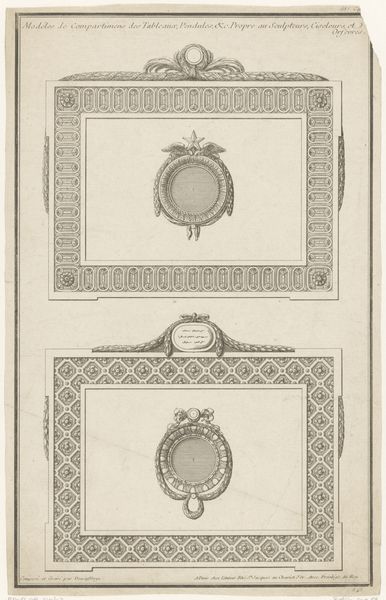
drawing, print, ink, engraving
#
drawing
#
pen drawing
# print
#
ink line art
#
ink
#
geometric
#
line
#
genre-painting
#
engraving
Dimensions: height 535 mm, width 447 mm
Copyright: Rijks Museum: Open Domain
Editor: Here we have an engraving titled "Ganzenbordspel," or "Game of the Goose," created between 1842 and 1866. It looks like it was printed by the widow C. Kok-van Kolm. The detail is incredible! The spiral leading to the center, the little geese… what do you see in this game board beyond its function as entertainment? Curator: This game, while seemingly simple fun, reflects deeper societal structures. The image in the center, depicting people gathered around a table, perhaps hints at the domestic sphere and social gatherings which were increasingly stratified by class. Editor: How so? It just looks like a family enjoying themselves. Curator: Look closer. Consider the details surrounding the central scene—the geese, the obstacles. These elements, drawn from folklore and daily life, are not merely decorative. They function as metaphors for the trials and tribulations one faces in the game, and by extension, in life. Who had time for leisure? For what demographic was this board made? Were these obstacles equally burdensome for all players regardless of gender or social standing? Editor: That’s an interesting point! I hadn't considered how access to leisure itself can be unequally distributed. Are you suggesting this game inadvertently reinforces those social barriers? Curator: Exactly. It subtly encodes acceptable behaviours, anxieties, and aspirations, subtly normalizing specific roles and expectations depending on social standing. Thinking about it this way invites a more critical engagement with what seems like innocent pastimes. What did people learn as they played? Editor: I always thought of these games as being removed from reality. Now I see how deeply embedded in social context even the simplest artwork can be. Curator: Precisely. By examining art through the lens of social history, we can better understand the complexities of the world.
Comments
No comments
Be the first to comment and join the conversation on the ultimate creative platform.
